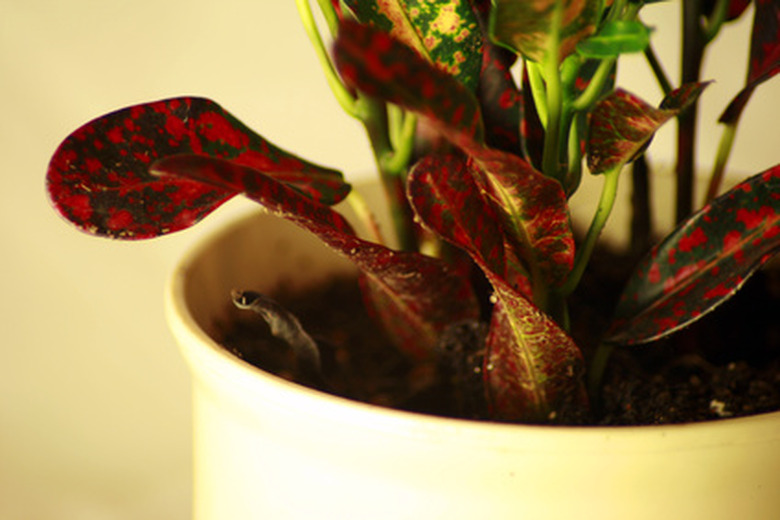How To Sterilize A Houseplant's Potting Soil
Things Needed
- Metal or glass baking sheets or clay pots
- Sieve or colander with 1/4-inch holes
- Dishwashing detergent
- Paper or cloth towels
- Ruler
- Aluminum foil
- Meat thermometer
Every gardener should know how to sterilize soil. While there are several methods of soil sterilization, the easiest is sterilization in an oven. Soil sterilization is actually soil pasteurization: You remove disease pathogens from the soil while allowing beneficial organisms to continue to live. Commercially purchased potting soil generally doesn't need sterilization, as it's sterilized before packaging. Sterilize potting soil that has already been used to grow houseplants or start seeds.
Step 1
Thoroughly wash the metal or glass baking sheets or the clay pots, as well as the sieve or colander, in hot water with dishwashing detergent. Dry completely with paper or cloth towels.
- Every gardener should know how to sterilize soil.
- Commercially purchased potting soil generally doesn't need sterilization, as it's sterilized before packaging.
Step 2
Place the potting soil and any amendments (like peat moss or compost) into the sieve or colander. Force the soil and amendments through the holes to remove lumps and loosen the soil. Remove any plant material (roots, leaves or stems) that may be in the soil at this time.
Step 3
Moisten the soil with water. You want the soil moist enough so that you can form a crumbly, loose ball when you squeeze it in your hand. Water should not drip from the soil when squeezed.
Step 4
Spread the soil to a depth of 4 inches in the metal or glass baking sheets, or place 4 inches of soil in a clay pot. Measure the depth of the soil with a ruler.
- Place the potting soil and any amendments (like peat moss or compost) into the sieve or colander.
Step 5
Cover the tops of the containers with aluminum foil.
Step 6
Insert a meat thermometer through the aluminum foil into the soil.
Step 7
Place the covered containers into a 200-degree (Fahrenheit) oven.
Step 8
Check the temperature the soil is at frequently. When the soil reaches 180 degrees Fahrenheit, turn the oven down to 180 degrees. Continue sterilizing the soil at 180 degrees for 30 minutes.
Step 9
Remove the containers from the oven. Keep the containers covered with aluminum foil and allow the soil to cool naturally (this will take several hours) to room temperature (about 70 degrees Fahrenheit).
- Cover the tops of the containers with aluminum foil.
- Place the covered containers into a 200-degree (Fahrenheit) oven.
Tip
You can sterilize soil in the microwave if you're pressed for time. Place 2 pounds of soil in a plastic bag made for microwave use. Leave the top of the bag unsealed. Heat on full power for 90 seconds. Seal the bag and allow the soil to cool to room temperature before using. Keep the soil covered with aluminum foil until you're ready to use it. If you're worried about overheating your soil, set your oven to 180 degrees Fahrenheit. It will take longer for the soil to reach the desired temperatures, but you'll have less risk of overheating.
Warning
Soil heated to more than 200 degrees Fahrenheit becomes toxic to plants. This is due to the separation of organic compounds, minerals and salt from the soil. Heating soil too high also kills beneficial organisms in the soil. Don't use plastic containers to sterilize soil in the oven. The plastic releases toxins into the soil. Use exactly 4 inches of soil. Use too much soil and you won't sterilize it completely; use too little soil and the soil will overheat and become toxic. Whichever method you use to sterilize your soil, there will be an unpleasant smell while the soil is heating and cooling. Never reuse baking sheets, sieves or colanders for food preparation after sterilizing soil in them.
References
- Colorado State University Extension: Start Seeds in Sterilized Soil
- Easy Balcony Gardening.com: How to Sterilize Potting Soil
- The Garden Primer; Barbara Damrosch; 1988
